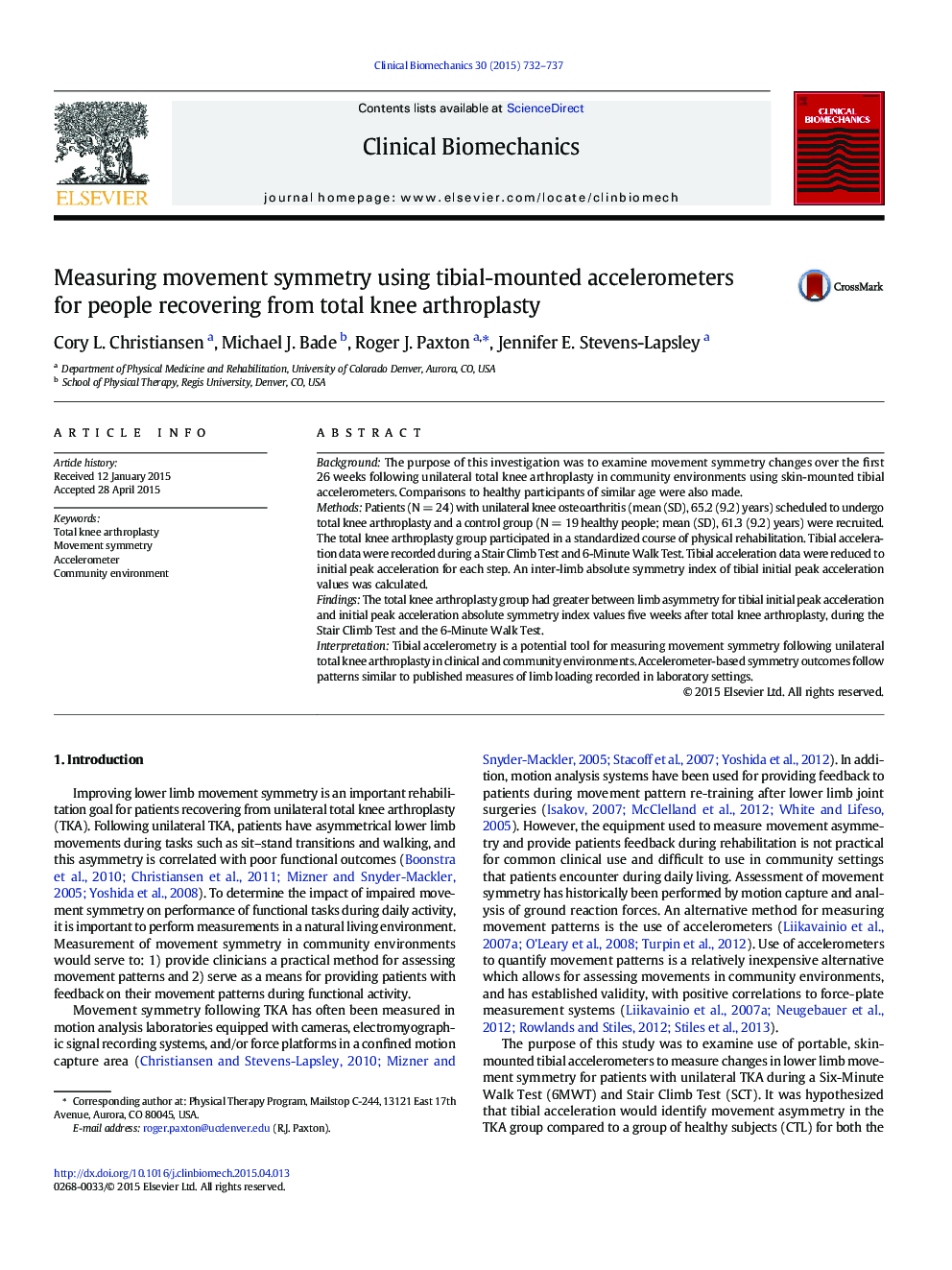| Article ID | Journal | Published Year | Pages | File Type |
|---|---|---|---|---|
| 4050202 | Clinical Biomechanics | 2015 | 6 Pages |
•Movement symmetry 26 weeks following total knee arthroplasty was examined.•Tibial accelerometers were used during a Stair Climb Test and 6-Minute Walk Test.•Comparisons to healthy participants of similar age were made.•The total knee arthroplasty group had greater between limb asymmetry.
BackgroundThe purpose of this investigation was to examine movement symmetry changes over the first 26 weeks following unilateral total knee arthroplasty in community environments using skin-mounted tibial accelerometers. Comparisons to healthy participants of similar age were also made.MethodsPatients (N = 24) with unilateral knee osteoarthritis (mean (SD), 65.2 (9.2) years) scheduled to undergo total knee arthroplasty and a control group (N = 19 healthy people; mean (SD), 61.3 (9.2) years) were recruited. The total knee arthroplasty group participated in a standardized course of physical rehabilitation. Tibial acceleration data were recorded during a Stair Climb Test and 6-Minute Walk Test. Tibial acceleration data were reduced to initial peak acceleration for each step. An inter-limb absolute symmetry index of tibial initial peak acceleration values was calculated.FindingsThe total knee arthroplasty group had greater between limb asymmetry for tibial initial peak acceleration and initial peak acceleration absolute symmetry index values five weeks after total knee arthroplasty, during the Stair Climb Test and the 6-Minute Walk Test.InterpretationTibial accelerometry is a potential tool for measuring movement symmetry following unilateral total knee arthroplasty in clinical and community environments. Accelerometer-based symmetry outcomes follow patterns similar to published measures of limb loading recorded in laboratory settings.
